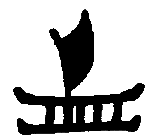
Article
Hawaiian Orchids
by Serge Kahili King
One of the nicknames of Hawaii Island is Big Island, as practically all Hawaii residents know, but another nickname is the Orchid Isle. With a nickname like that you would expect to see a lot of native orchids growing wild all over the place. Unfortunately, you don’t, because the nickname really refers to the many commercial orchid farms on the island that send plants, flowers and leis to all parts of the world.
Fortunately, you do see a lot of very beautiful orchids growing in public places here and there. Some of these are commercial varieties of non-native orchids imported from America, Asia, and Africa and carefully placed by orchid lovers in trees mostly, and occasionally on the ground. A couple of places where you can see them are in the public area of Hilo Airport and at the rest area of Kaumana Caves.
There are three varieties of Asian orchids that have naturalized themselves, meaning that they have evolved so that they can reproduce themselves in the wild. All three are ground orchids. The most widespread is the bamboo orchid (Arundina bambusaefolia), which has a purple and white flower and whose grass-like stalk grows as high as six feet. You can see these in many areas, including Volcano, and often in great abundance in Hawaiian Acres and Kopua Farmlots.
The Phillipine ground orchid (Spathoglottis plicata) with its three-foot stalk and small purple flowers can be seen frequently along roadways as well as in grassy areas of Volcanoes National Park. The third one of this group is the Chinese ground orchid (Phaius tankervilliae), sometimes found in wet forest areas. Native Hawaiian orchids do exist, although there are only four kinds, less than in any other State. All of them are in rainforest areas and produce very small flowers. Two varieties are known exist on Big Island in Volcanoes National Park, but they are very rare. The Hawaiian name for only one variety can be found in the Hawaiian Dictionary. It is endemic to Hawaii and it is called ‘awapuhi-a-Kanaloa (Liparis hawaiiensis). Ordinarily, the word ‘awapuhi refers to ginger, but ancient Hawaiians made relationships between things in different ways than those the Western world created, so the tiny flower of this orchid probably resembles the small flowers of the wild ginger (Zingiber zerumbet), and perhaps the ancient Hawaiians named the ginger after the orchid. We can learn something interesting from the construction of the name ‘awapuhi-a-Kanaloa. Literally, it means “plant that belongs to the god Kanaloa.” To understand the meaning, you have to know that in the spiritual system of ancient Hawaii many gods were assumed to have the power of taking on different forms. The general term for this ability was kino lau, meaning “many bodies.” Today we are somewhat familiar with this idea due to the legends of Pele, the volcano goddess, being able to take the form of an old woman, a young woman, a white dog, or a flame. Kanaloa was most well known as a god of the ocean, of healing, and of freshwater springs. As a god of the ocean he was involved in navigation. His name is given to the Tropic of Cancer and some say that one of his kino lau was the dolphin. Another of his kino lau was the squid, which was used for healing as well as for food. Since the ‘awapuhi-a-Kanaloa is only found in wet forests, this little Hawaiian orchid kino lau may also be associated with springs that are found in lush areas along the coasts.
E ola na ‘okika o Hawai’i – Long live the orchids of Hawaii!
[Top of page] - Contact us